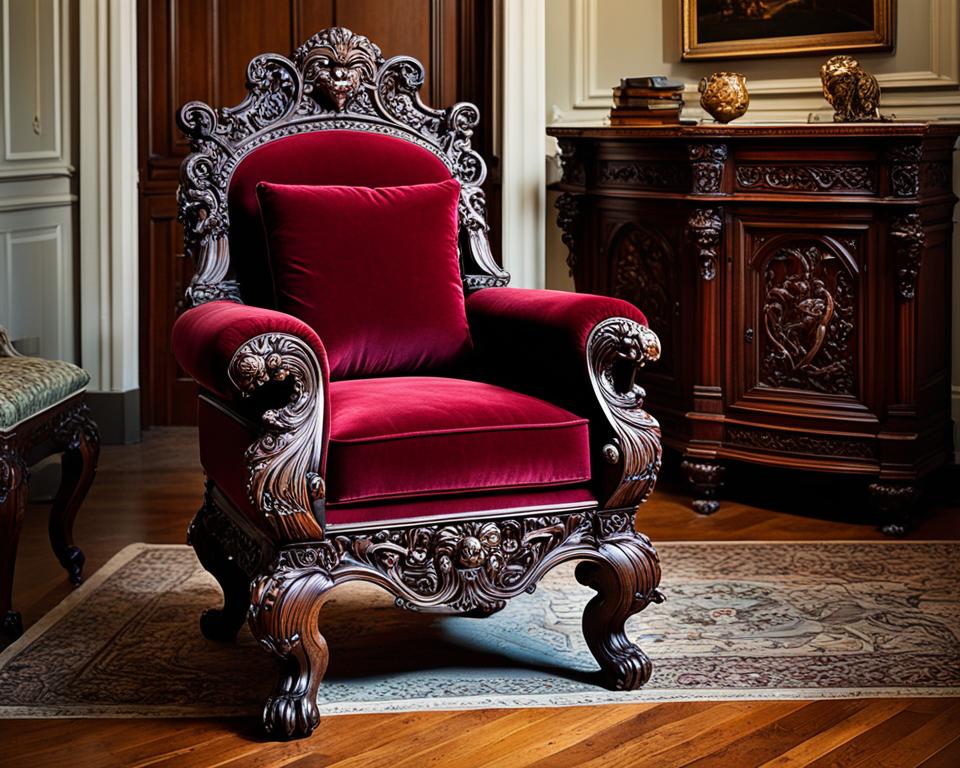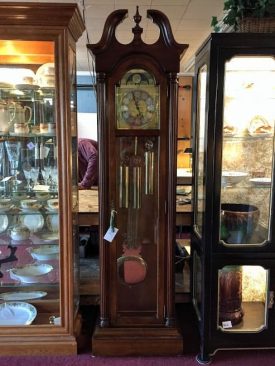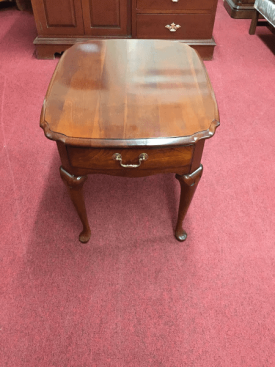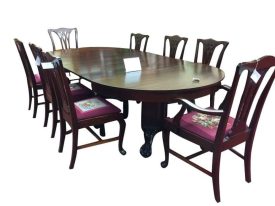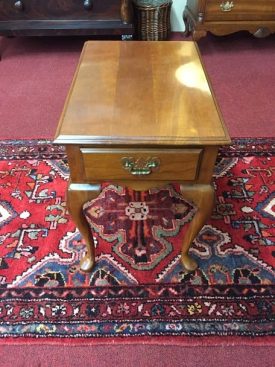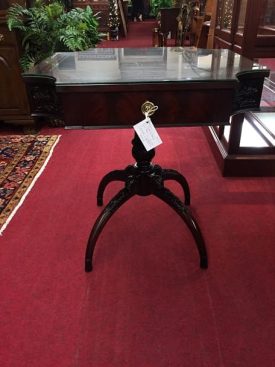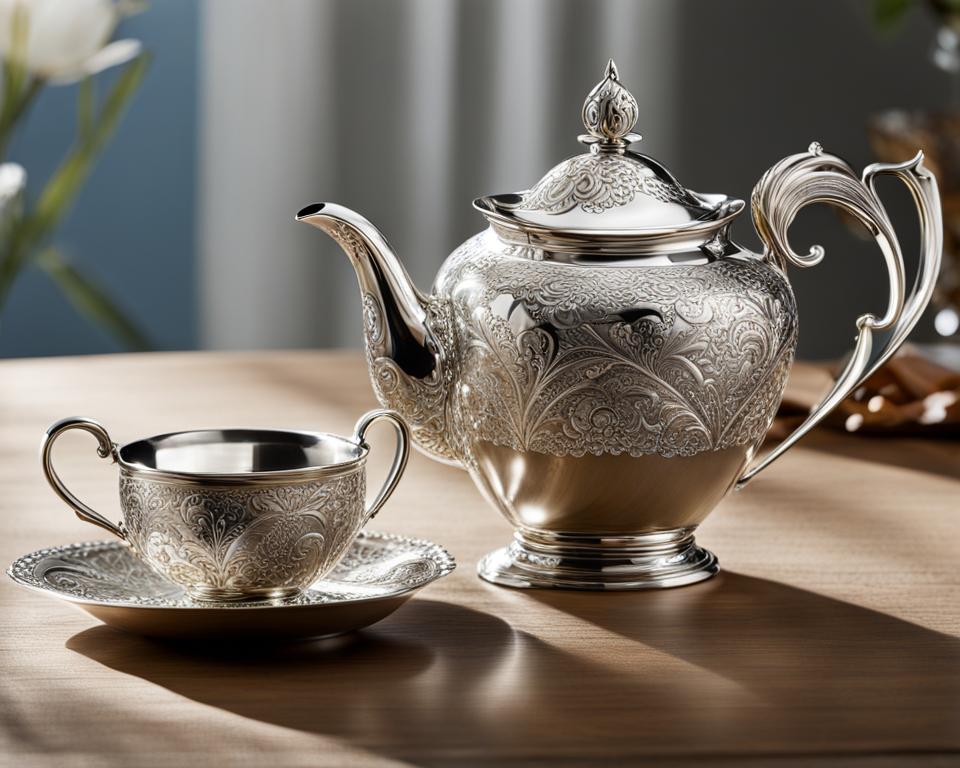Renaissance Revival antique furniture is a timeless and elegant style that has had a significant impact on vintage home decor and period furniture collecting. With its intricate carvings, rich materials, and classical motifs, Renaissance Revival pieces add a touch of sophistication to any interior design. Let’s dive into the world of Renaissance Revival antique furniture and uncover some hidden gems.
Key Takeaways:
- Renaissance Revival antique furniture is renowned for its intricate carvings and rich materials.
- It originated in the 19th century as a revival of the classical styles from the Renaissance period.
- Renaissance Revival furniture can be incorporated into various design styles, adding a sense of history and grandeur.
- Collecting authentic Renaissance Revival furniture requires research and restoration.
- The value of Renaissance Revival furniture lies in its craftsmanship, rarity, and historical significance.
The History of Renaissance Revival Furniture
Renaissance Revival furniture originated in the 19th century as a revival of the classical styles from the Renaissance period. It drew inspiration from the grandeur and elegance of Renaissance architecture and design. The furniture was characterized by intricately carved details, use of rich materials such as walnut and mahogany, and elaborate decorative motifs like acanthus leaves and scrollwork.
The craftsmanship of Renaissance Revival furniture was of the highest quality, showcasing the skill and artistry of the artisans of that time. Each piece was meticulously crafted, paying attention to every intricate detail, resulting in furniture that epitomized excellence in antique furniture craftsmanship.
Take a moment to admire this exquisite example of Renaissance Revival antique furniture:
As you can see, the table exemplifies the stunning craftsmanship and attention to detail that Renaissance Revival furniture is known for. The intricate carvings and use of luxurious materials create a piece that exudes elegance and timeless beauty.
Key Features of Renaissance Revival Furniture
Renaissance Revival furniture is renowned for its distinctive characteristics, which set it apart from other historical furniture styles. This style often showcases bold and elaborate carvings, incorporating a wide range of motifs such as floral designs, grotesque faces, and mythological figures. The attention to detail and craftsmanship of Renaissance Revival pieces is evident in their sturdy construction, featuring dovetail joints and intricate hand-carved details.
One of the defining features of Renaissance Revival furniture is the use of high-quality materials like walnut, mahogany, and rosewood. These materials not only enhance the richness of the pieces but also contribute to their durability and longevity. Additionally, Renaissance Revival furniture frequently incorporates architectural elements inspired by Renaissance architecture, such as columns, arches, and pediments, further emphasizing its classic and timeless appeal.
To provide a better understanding of the key features of Renaissance Revival furniture, the table below highlights some of its distinct characteristics:
| Features | Details |
|---|---|
| Bold Carvings | Elaborate floral motifs, grotesque faces, and mythological figures |
| Sturdy Construction | Dovetail joints for added strength and longevity |
| Hand-Carved Details | Precision-crafted, intricate carvings showcasing skilled craftsmanship |
| High-Quality Materials | Walnut, mahogany, and rosewood for richness and durability |
| Architectural Elements | Incorporation of columns, arches, and pediments inspired by Renaissance architecture |
These distinctive features make Renaissance Revival furniture a captivating choice for collectors and enthusiasts of historical furniture. Whether you appreciate the artistry of the carvings or the timeless elegance of the materials used, Renaissance Revival pieces add a touch of grandeur and sophistication to any space.
This image showcases the intricate carvings and opulent materials that define Renaissance Revival furniture.
Renaissance Revival Furniture in Interior Design
Renaissance Revival furniture brings an air of elegance and sophistication to any interior design. With its intricate carvings and luxurious materials, it has the ability to become a stunning focal point in any room. Whether incorporated into a traditional or eclectic design style, Renaissance Revival pieces add a sense of history and grandeur to the space. Paired with other antique pieces or vintage home decor items, this furniture creates a harmonious and timeless look that transforms any interior.
Take, for example, an ornate Renaissance Revival dining table. Its exquisite detailing and craftsmanship make it the centerpiece of a dining room, evoking a sense of opulence and refinement. This table, surrounded by beautifully carved armchairs, creates a regal atmosphere fit for hosting grand dinners or intimate gatherings.
“Renaissance Revival furniture is not only visually striking but also tells a story of the past. When incorporated into a design, it adds an element of sophistication and intrigue that captivates the eye.”
For those who appreciate a more eclectic approach, Renaissance Revival furniture can be combined with modern or contemporary pieces to create a unique juxtaposition. Imagine a sleek, minimalist living room featuring a statement Renaissance Revival cabinet adorned with intricate carvings and gilded accents. This unexpected fusion of styles creates a captivating visual contrast.
Creating a Timeless Look
When incorporating Renaissance Revival furniture into interior design, it is crucial to consider balance. The key is to strike a harmonious blend between the antique pieces and other elements in the space. One approach is to use Renaissance Revival furniture as the centerpiece while surrounding it with contemporary decor to highlight its timeless beauty. Alternatively, the furniture can be distributed throughout the room, acting as accent pieces that add flair and character to the overall design.
Additionally, the choice of color palette plays a vital role in creating a cohesive look. Neutral tones, such as creams and grays, provide a subtle backdrop that allows the furniture’s intricate details to shine. Deep jewel tones, like burgundy or emerald, can also enhance the luxurious feel of Renaissance Revival pieces, creating an atmosphere of opulence and regality.
When selecting accessories and decorative elements, consider pieces that complement the furniture’s ornate style. Mirrors with elaborate frames, vintage tapestries, and gilded picture frames add texture and charm. These carefully curated accents bring together the overall design and ensure the Renaissance Revival furniture stands out as the highlight of the space.
By thoughtfully integrating Renaissance Revival furniture into interior design, it is possible to create a timeless and sophisticated atmosphere that invites admiration and awe. The combination of intricate carvings, sumptuous materials, and historical significance makes these pieces true works of art that elevate any space to new heights of beauty.
Collecting Renaissance Revival Furniture
Collecting Renaissance Revival furniture can be a rewarding experience for antique enthusiasts. The allure of these exquisite pieces lies in their timeless beauty and historical significance. To begin your collection, it is important to seek out authentic and well-preserved examples that embody the essence of Renaissance Revival style.
Research and Authentication:
When acquiring Renaissance Revival antique furniture, thorough research is key to ensuring you invest in genuine pieces. Familiarize yourself with the characteristics and hallmarks of this style, such as intricate carvings, luxurious materials, and classical motifs. Consulting reputable antique books, catalogs, and online resources can provide valuable guidance in identifying authentic Renaissance Revival furniture.
Additionally, it is essential to assess the provenance of the pieces. Look for any historical documentation, such as receipts, certificates, or labels that can provide insights into the furniture’s origin and history. This information adds value and authenticity to your collection.
Preservation and Restoration:
Preserving the original beauty of Renaissance Revival furniture requires expert care and consideration. If the pieces in your collection show signs of wear or damage, professional restoration may be necessary to revive their splendor. Seek out experienced antique restorers who specialize in Renaissance Revival pieces, as they possess the knowledge and skill to handle these delicate works of art.
Restoration should adhere to traditional techniques and highlight the craftsmanship that defines Renaissance Revival furniture. Proper cleaning, repairing loose joints, and revitalizing the wood’s finish are essential steps in the restoration process. The objective is to enhance the furniture’s aesthetic appeal while maintaining its historical integrity.
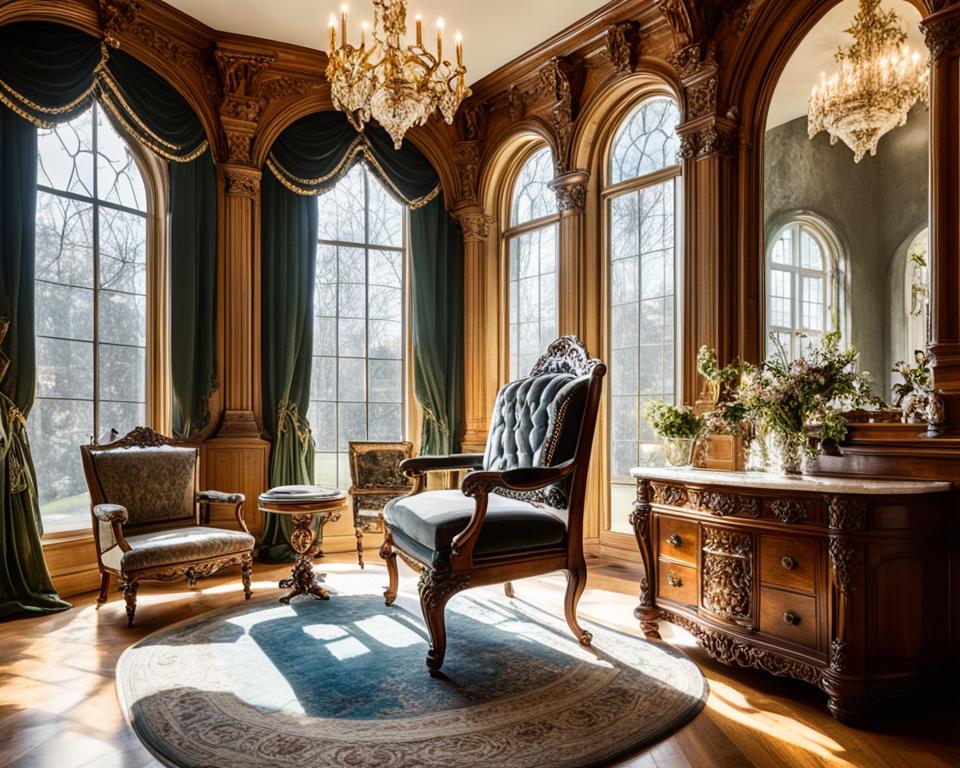
As you expand your collection of Renaissance Revival furniture, it is beneficial to acquire a diverse range of pieces. Consider adding different types of furniture such as ornate tables, chairs, cabinets, and beds to showcase the breadth of this style’s influence. Including pieces with various decorative elements, motifs, and materials will enrich your collection and illustrate the versatility of Renaissance Revival furniture.
Quotes:
“Collecting Renaissance Revival furniture allows us to preserve and appreciate a significant period in art and design history. Every piece tells a story and contributes to the rich tapestry of the Renaissance Revival movement.” – Renowned Antique Collector
Tips for Collecting Renaissance Revival Furniture:
- Visit antique furniture fairs, auctions, and reputable antique dealers to find unique pieces for your collection.
- Network with fellow antique enthusiasts, attend seminars, and join online communities dedicated to antique collecting to gain valuable insights and knowledge.
- Take the time to examine and appreciate the craftsmanship and intricate details of each piece before making a purchase.
- Maintain proper care and storage for your collection to ensure its longevity and preservation.
By conscientiously collecting Renaissance Revival furniture and investing in its preservation, you become a custodian of history, keeping the legacy of this remarkable period alive for generations to come.
Recognizing Renaissance Revival Furniture Reproductions
When it comes to collecting Renaissance Revival antique furniture, it’s essential to be able to distinguish between authentic pieces and reproductions. The market for antique collecting is not immune to reproductions or fakes, making it crucial for collectors to have the knowledge and tools to identify them. Authentic Renaissance Revival furniture should exhibit signs of age and wear, reflecting its history and journey through time. In contrast, reproductions may appear too pristine and lack the genuine patina that comes with age.
Examining the craftsmanship is another crucial aspect of recognizing Renaissance Revival reproductions. Authentic pieces from this period typically showcase meticulous craftsmanship, with intricate carvings and attention to detail. Pay close attention to the materials used as well. Renaissance Revival furniture is often crafted from solid wood, such as walnut or mahogany, and may also feature inlays or veneers. These distinctive characteristics highlight the quality and authenticity of the piece.
One helpful approach is to study and compare Renaissance Revival antique furniture to authentic examples or reference materials. This research can help familiarize collectors with the specific motifs, styles, and finishes commonly found in Renaissance Revival pieces. By developing an eye for detail and a deep understanding of the period, collectors can confidently identify reproductions and make informed decisions when adding pieces to their collections.
| Signs of Authentic Renaissance Revival Furniture | Signs of Reproductions |
|---|---|
|
|
To further enhance your ability to recognize reproductions, consult reputable antique dealers, experts, or join online communities dedicated to antique collecting. These resources can provide valuable insights and expert guidance, helping collectors navigate the complex world of Renaissance Revival furniture. Ultimately, developing a discerning eye and expanding your knowledge base will allow you to confidently identify authentic pieces and build a remarkable collection of Renaissance Revival antique furniture.
The Beauty of Antique Furniture Restoration
Antique furniture restoration is an art in itself. Restoring Renaissance Revival furniture requires skill and expertise to preserve the original beauty and integrity of the piece. It involves repairing any damage, such as scratches or loose joints, and refinishing the surface to bring back its original luster. An experienced antique restorer can also recreate missing or damaged carvings, ensuring the piece retains its historical value. Restoring Renaissance Revival furniture allows future generations to enjoy its beauty and craftsmanship.
Antique restoration is not just about fixing structural issues; it is about breathing new life into a piece of history. By carefully restoring Renaissance Revival furniture, these masterpieces can regain their former glory and continue to be cherished for years to come.
Preserving History
Every scratch, every layer of dust tells a story. When antique furniture is restored, it is not only about making it aesthetically pleasing but also about preserving its historical significance. Renaissance Revival furniture is a testament to the craftsmanship and artistry of a bygone era. By restoring these pieces, we ensure that the stories they hold are passed down through generations.
Restoration experts understand the importance of maintaining the authenticity of Renaissance Revival furniture. They use traditional techniques and materials to recreate missing parts, respecting the original design and ensuring historical accuracy. This dedication to authenticity allows these restored pieces to continue to be appreciated and studied as valuable examples of their time.
Bringing Beauty Back to Life
Renaissance Revival furniture is known for its intricate carvings, exquisite details, and luxurious materials. However, over time, these pieces can suffer from wear and tear, losing their original splendor. Through meticulous restoration, the true beauty of Renaissance Revival furniture can be brought back to life.
Antique restorers employ various techniques to repair and revitalize Renaissance Revival pieces. They meticulously clean and remove layers of dirt and grime, revealing the hidden beauty underneath. They repair loose joints, replace missing hardware, and carefully strip and refinish the surfaces to enhance the natural colors and textures of the wood.
The transformation is remarkable. Once again, the intricate carvings become vivid and eye-catching, the rich wood tones glow with warmth, and the piece radiates the elegance and grandeur it was intended to exude. Restoration allows us to appreciate the true beauty of Renaissance Revival furniture as the craftsmen originally intended.
Preserving and Enhancing the Value
Restoring Renaissance Revival furniture not only preserves its historical and aesthetic value but also enhances its monetary value. Well-restored pieces in excellent condition are highly sought after by collectors, interior designers, and vintage furniture enthusiasts.
When it comes to antique furniture, originality and condition are key factors that determine value. A professionally restored Renaissance Revival piece with minimal alterations maintains its authenticity, making it a valuable investment. The craftsmanship and attention to detail demonstrated by the restorer also contribute to the overall value of the piece.
Whether you are an avid collector or a homeowner looking to add a touch of history and beauty to your space, restoring Renaissance Revival antique furniture is a worthwhile endeavor. It allows you to preserve the heritage of these extraordinary pieces while enjoying their timeless elegance.
| Benefits of Antique Furniture Restoration | Why Choose Professional Restoration |
|---|---|
|
|
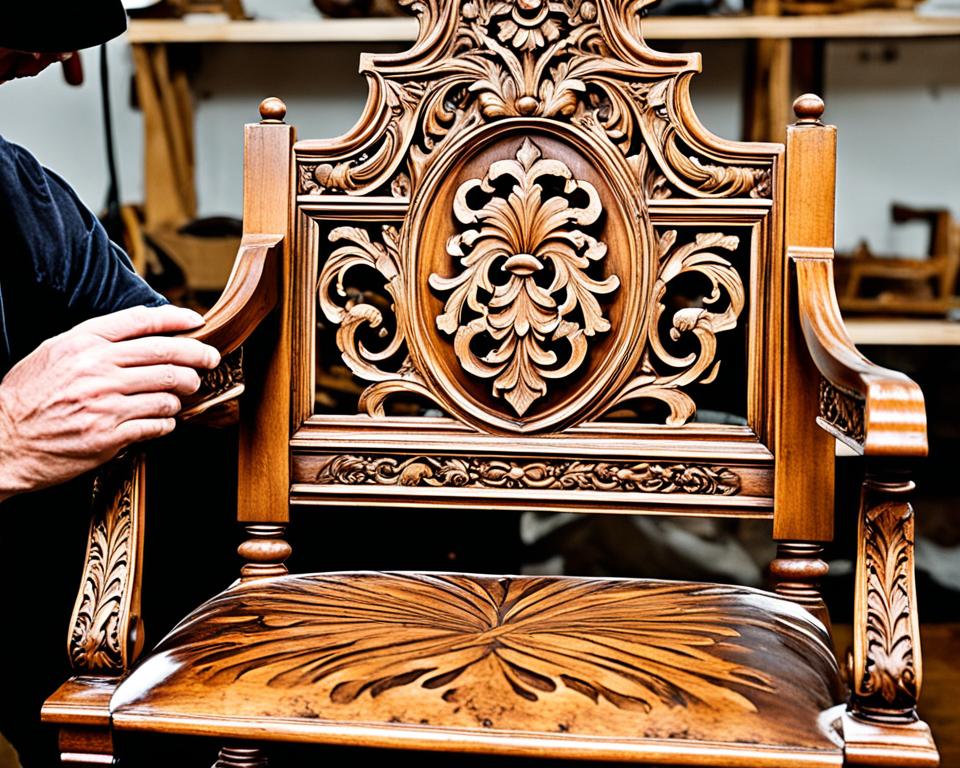
The Value of Renaissance Revival Antique Furniture
Renaissance Revival antique furniture possesses immense value, both in terms of aesthetics and historical significance. This style’s exceptional craftsmanship and design make it highly sought after by collectors and interior designers alike. The rarity and quality of Renaissance Revival furniture contribute to its desirability and value within the antique market. As the popularity of vintage home decor continues to rise, the demand for Renaissance Revival pieces is expected to grow exponentially. Purchasing well-preserved and authentic Renaissance Revival furniture is a prudent decision; it allows collectors to possess timeless beauty and enables homeowners to infuse their spaces with a touch of elegance.
Investing in Renaissance Revival antique furniture showcases a profound appreciation for exquisite craftsmanship and a dedication to preserving the past. These meticulously crafted pieces serve as remarkable focal points, enhancing the ambiance and allure of any interior. Whether displayed in a traditional setting or incorporated into an eclectic design, Renaissance Revival furniture adds a touch of grandeur and sophistication to any space.
Rarity and Quality
Renaissance Revival antique furniture stands apart due to its scarcity and superior quality. Each piece is a testament to the remarkable skills of the craftsmen who created them. The meticulous attention to detail, precision carvings, and use of high-quality materials such as walnut, mahogany, and rosewood ensure the longevity and durability of these iconic pieces. The rarity and exquisite nature of Renaissance Revival furniture contribute to its allure and make it a prized possession among collectors.
Aesthetic Appeal
One cannot underestimate the aesthetic impact of Renaissance Revival furniture. Its intricate carvings, ornate details, and classical motifs add a sense of elegance and opulence to any space. Incorporating Renaissance Revival pieces into an interior design creates a visually captivating environment that exudes charm and sophistication. Whether it’s an elaborately adorned dining table or a beautifully crafted armchair, these timeless pieces become cherished heirlooms and conversation starters.
Appreciating History
Collecting Renaissance Revival antique furniture is more than just acquiring beautiful pieces; it’s an opportunity to connect with history. Each item holds stories of a bygone era, providing a tangible link to the past. By appreciating and investing in Renaissance Revival furniture, enthusiasts and collectors play an essential role in preserving the artistry and craftsmanship of a remarkable period in history.
| Benefits of Renaissance Revival Antique Furniture |
|---|
| Enhances the aesthetic appeal of any interior |
| Displays exceptional craftsmanship and design |
| Adds a touch of elegance and grandeur to spaces |
| Rare pieces hold high value in the antique market |
| Creates a connection with history and the past |
Investing in Renaissance Revival antique furniture brings timeless beauty and historical significance into your home. These exquisite pieces are not only valuable collectibles but also functional works of art that elevate any interior design. By cherishing and preserving Renaissance Revival furniture, enthusiasts celebrate the artistry of the past and ensure its legacy for future generations.
Conclusion
Renaissance Revival antique furniture is a treasure trove of elegance and craftsmanship that has left a lasting impact on vintage home decor and period furniture collecting. The intricate carvings and timeless design of these pieces have captivated collectors and enthusiasts alike, showcasing the enduring allure of classic styles.
Whether you are a seasoned collector or simply appreciate the beauty of antique furniture, exploring the world of Renaissance Revival pieces is a journey worth taking. These gems hold not only historical significance but also have the power to transform any interior space.
From luxurious dining tables to beautifully carved armchairs, Renaissance Revival pieces create a sense of sophistication and add a touch of history to any room. Incorporating these antique treasures into your vintage home decor allows you to infuse your space with timeless beauty and showcase the craftsmanship of a bygone era.
As the demand for vintage home decor and period furniture collecting continues to grow, Renaissance Revival antique furniture remains highly sought after by collectors and interior designers. Investing in well-preserved and authentic Renaissance Revival pieces can be a wise decision, not only to enhance the beauty of your space but also to be a custodian of history, appreciating the artistry and craftsmanship for generations to come.
FAQ
What is Renaissance Revival antique furniture?
Renaissance Revival antique furniture is a style that originated in the 19th century as a revival of classical designs from the Renaissance period. It is characterized by intricate carvings, rich materials, and decorative motifs inspired by Renaissance architecture and design.
What are the key features of Renaissance Revival furniture?
Renaissance Revival furniture is known for its bold and elaborate carvings, use of high-quality materials such as walnut and mahogany, and incorporation of architectural elements like columns and pediments.
How can Renaissance Revival furniture be used in interior design?
Renaissance Revival furniture adds elegance and sophistication to any interior design. It can be used as a statement piece to anchor a room or as part of a cohesive vintage home decor theme.
What should collectors look for when collecting Renaissance Revival furniture?
Collectors should look for authentic and well-preserved pieces with signs of age and wear. It is also important to research the history and provenance of the furniture to ensure its authenticity.
How can one recognize reproductions of Renaissance Revival furniture?
Reproductions may appear too pristine and lack signs of age and wear. Authentic Renaissance Revival furniture will have high-quality materials and craftsmanship consistent with the period.
What is involved in restoring Renaissance Revival furniture?
Restoring Renaissance Revival furniture requires skill and expertise to repair any damage, refinish the surface, and recreate missing or damaged carvings. An experienced antique restorer should be consulted.
What is the value of Renaissance Revival antique furniture?
Renaissance Revival antique furniture holds aesthetic and historical value. Its rarity, quality craftsmanship, and timeless design contribute to its value on the antique market.

